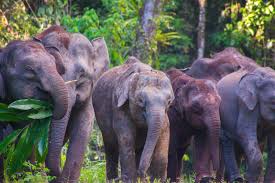The eastern black rhino is incredibly endangered, with just 1000 spread across a huge area. In this region, just 8 are known to live, so to see young is incredibly rare.
Rhino horn is incredibly valuable on the far East traditional medicine market, despite the fact that multiple scientific studies have shown that the rhino horn does nothing for humans. Never-the-less, this unmet demand for rhino horn, linked with the huge explosion of wealth in places like China, means that rhino horn is incredible valuable. While eastern black rhino horns rarely weigh more than 3kg, this can still be worth $200,000, which is very tempting, in a country where the average salary is under $200 a month.
As living conditions increase in the area, the desire to poach these animals is likely to decrease. Of course, these rhino are also likely to be worth similar amounts in tourism dollars across their lifetime, but that is a long-term thing, and something that the whole area benefits from (rather than the poacher, who is often struggling to make ends meet – though middlemen are instead making a fortune).



















